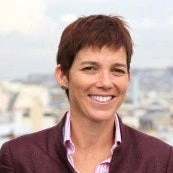 Before I started working on the World Developmnet Report 2012 (WDR), I often thought of gender equality being at the periphery of my work on development. Like many other World Bank colleagues, I would have told you: “Yes, gender equality matters and it is a good thing.” But in my mind gender equality was something that happened pretty much automatically with economic development. If asked about policy priorities, I would say: focus on growth, on creating jobs, on reducing poverty and improving equity in opportunities, and gender equality will come right along. But I was wrong. Gender equality is not just something that ‘happens’ with development. Gender equality is both fundamental to and a means for development. And countries need to work hard at achieving it, because it does not come about on its own with economic growth.
Before I started working on the World Developmnet Report 2012 (WDR), I often thought of gender equality being at the periphery of my work on development. Like many other World Bank colleagues, I would have told you: “Yes, gender equality matters and it is a good thing.” But in my mind gender equality was something that happened pretty much automatically with economic development. If asked about policy priorities, I would say: focus on growth, on creating jobs, on reducing poverty and improving equity in opportunities, and gender equality will come right along. But I was wrong. Gender equality is not just something that ‘happens’ with development. Gender equality is both fundamental to and a means for development. And countries need to work hard at achieving it, because it does not come about on its own with economic growth.
Higher incomes and the economic changes that come with growth do help close some gaps, as in education. As schools expand and more jobs open up for young women, parents see clear benefits to educating their girls. In a third of developing countries there are more girls in secondary school than boys, and at the university level, young women now outnumber young men in over 60 countries. And as they get more educated, women are more likely to work outside the home, and earn incomes. Indeed, over half a billion women have joined the world’s labor force over the last 30 years. As a result women now represent over 40 percent of the global labor force.
But other gender gaps remain stubbornly persistent, most obviously where girls and women face other disadvantages (such as poverty or exclusion due to ethnicity, remoteness or other factors) or where markets failures, poor service delivery institutions and social norms combine to limit progress. While there is little difference in schooling between wealthy boys and girls in the Democratic Republic of Congo, poor girls are half as likely as poor boys to complete primary school.
The worst disparity is the rate at which girls and women die relative to men in developing countries—leading to about 3.9 million “missing” women per year. About two-fifths are never born (due to son preference), a sixth die in early childhood, and over a third die in their reproductive years. And the problem is getting worse, especially in Sub-Saharan Africa.
Big gaps remain also in access to economic opportunities and in voice. Around the world, women are far more likely than men to work as unpaid family laborers or in low-earning occupations, to farm smaller plots, and to manage smaller firms in less profitable sectors. So, almost everywhere, whether as workers, farmers or entrepreneurs, women earn less than men. Women have less say over decisions and less control over household resources than men do. And women’s representation in society, in business and in politics is significantly lower than men’s, with little differences between poor and rich countries. Less than 20 percent of seats in parliament around the world are held by women.
Redressing these gender disparities is smart economics. There is a growing body of careful micro-level studies that highlight the beneficial effects of closing these gender gaps. For example, improving women’s access to agricultural inputs in Burkina Faso would increase total household agricultural production by about 6 percent, with no additional resources—simply by reallocating resources such as fertilizer and labor from men to women. And in Malawi and Ghana equalizing access to fertilizers and other inputs between women and men farmers could increase maize yields by over a sixth. Similarly, eliminating barriers that discriminate against women working in certain sectors or occupations could increase labor productivity by as much as 25 percent across a range of countries. These productivity gains are likely to be even larger in a more globalized world where efficiency in the use of resources is essential to countries’ growth.
And gender equality matters for society more broadly. Empowering women as economic, political and social actors can make institutions more representative of a range of voices and change policy choices. In India, giving power to women at the local level led to increases in the provision of public goods, such as water and sanitation, which mattered more to women.
Gender equality can also help improve outcomes for the next generation. Women’s education and health have been linked to better outcomes for their children in countries as varied as Brazil, Nepal, Pakistan, and Senegal. In China increasing women’s income improved schooling for both boys and girls. Instead, a comparable increase in men’s income reduced educational attainment for girls.
So, what should policymakers do? The WDR 2012 identifies four priority areas: 1) addressing excess deaths of girls and women and eliminating gender gaps in education where these persist; 2) closing earning and productivity gaps between women and men; 3) giving women greater voice within households and societies; and 4) limiting the perpetuation of gender inequality across generations.
To be effective, policies need to target the root causes of these gaps. For some problems, as with high maternal mortality, this requires fixing the institutions that deliver services to expectant mothers—as Turkey did, targeting underserved women and areas. For other gaps, as with unequal access to economic opportunities, policies need to tackle the multiple constraints—in markets, in institutions and inside the household—that keep women trapped in low productivity/low earning jobs. This requires not just improving women’s access to productive resources, but also tackling information problems and institutional biases that work against women and lifting time constraints linked to care and housework.
What does this mean for the World Bank? These findings have implications for how the development community supports gender equality, starting with the Bank.
First, we need to enhance our country-level diagnostics so as to better inform country policy dialogue. The WDR 2012 shows that to understand gender outcomes we need to analyze carefully how markets, institutions (formal and informal) and households interact with each other to support or impede greater gender equality. The report also shows that the binding constraints are sometimes not where we think they are: for example, women’s over-representation in certain sectors or occupations may not be a result of discrimination in the labor market per se. Deeply rooted gender roles that, almost everywhere, allocate the bulk of responsibility for care and house work to women and force them into making difficult choices have a lot to do with it.
Another implication is that we need to scale up our lending and support for the four priority areas identified in the WDR 2012. In some areas, this will require sustaining or adjusting existing efforts, as in education or our work on adolescent girls. In other areas, it will demand new or additional action on multiple fronts—some combination of more funding (directed especially to helping poor countries reduce excess deaths of girls and women through investments in clean water and sanitation and maternal health services), coordinated efforts to improve the availability of gender-disaggregated data and to foster more experimentation and systematic evaluation of interventions (especially those that aim to improve women’s access to markets, services, or justice), and more effective partnerships.
And we need to think internally how we can all be more responsive and accountable for improving our work on gender equality.
I hope many of you (especially the skeptics) will take a look at the report and maybe you too, like I did, will gain new insights on how gender matters to our work.


Join the Conversation